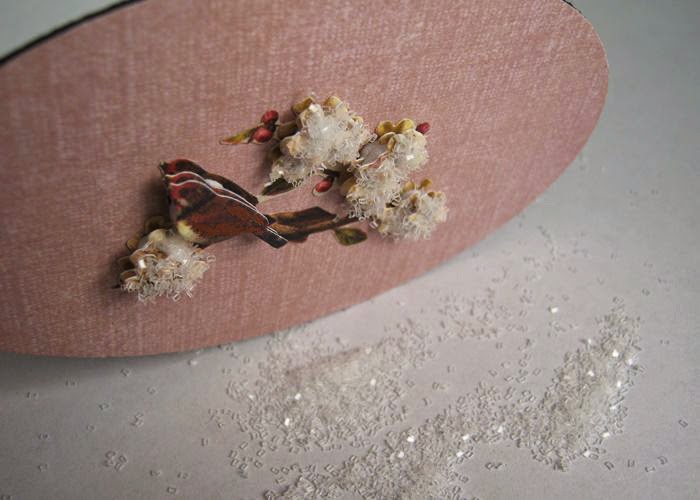I haven't worked with our Large Round Paperweight Kit for a while, so I thought I'd design a project especially for this style.
The Large Round has just a light recess on the bottom, so you're limited to displaying very thin objects such as photographs and artwork printed on paper. Because I'm adding some antique, French playing cards, I'll be excluding the mounting board to conserve some much needed space.
The playing cards I'm using are smaller than the cards we're accustomed to in the United States. They measure 2 1/2" x 1 13/16" which makes them perfect for paperweight designs. (I'll provide more information about these cards later in this post.) I also used a sheet of striped scrapbooking paper from a paper stack pad.
The paperweight kit (PhotoWeights: Large Round) is available on our website at PhotoWeights.com.
In order to conserve some space (thickness), I won't be using a mounting board for this project. Instead, I'm using a template (PhotoWeights: Display Area Template) to trace an outline in pencil that's the exact size of the mounting board.
After I cut along the pencil line I traced , the scrapbook paper is the perfect size. If any traces of pencil remain along the edge, use an eraser to gently remove them.
The antique cards I'm using were made by B.P. Grimaud in Paris. Some of Grimaud's cards are more plain than these. Others come in themed editions that are much more beautifully illustrated. I paid about $10.00 for two of these decks at a flea market. You can also find full and partial decks on Ebay and Etsy from time-to-time.
If you have some antique or collectible cards of your own, I would recommend researching them on Google, Worthpoint, or Ebay before you begin to cut and glue them. They may be much more valuable than you think.
I placed the cards on the background paper using double-sided tape. You can also use a liquid glue. Adhesives such as foam mounting tape, rubber cement, and hot melt glue would add too much thickness to the design.
The King card was cut along the bottom-left corner to follow the curve of the paper.
Once the cards were in place, the background paper was placed face-down onto the bottom of the paperweight. Because of the way the paperweight is designed, you won't be able to notice if your cut line along the edge of the paper is not perfectly even.
The final step is placing the adhesive pad (included with each PhotoWeights paperweight kit) over the bottom surface.
I hope you liked seeing how this paperweight design was made. If there's a particular type of item or craft you would like me to feature on our design blog, please let me know.

















































